Realizing Children’s Rights in Uganda
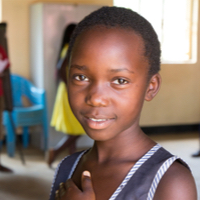
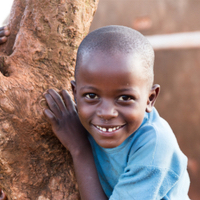
Uganda (also called the Republic of Uganda) is a country in East Africa that comprises 21 million children (46 percent of the total population). With famine, constant conflict, AIDS, and poverty, Uganda has been challenged with several issues that significantly affect children’s lives. When combined with lack of resources, education, and healthcare in certain regions, children’s rights remain the object of an unrelenting assault; the conditions of their existence and survival precarious at best.

Children’s Rights Index: 6,06 / 10
Red level: Difficult situation
Population: 45,74 million
Pop. ages 0-14: 45.9%
Life expectancy: 63.4 years
Under-5 mortality rate: 41 ‰
Uganda at a glance
Uganda (also known as the Republic of Uganda) is a landlocked country in East Africa bordered by the Democratic Republic of Congo, Kenya, and South Sudan. It is in the African Great Lakes region and shares Lake Victoria with Kenya and Tanzania while also lying within the Nile basin.
It’s population is approximately 45.74 million (World Bank, 2020). 8.5 million of this population resides in Kampala which is Uganda’s capital and largest city. With its population increase over the past years, Uganda is expected to double its population from 2020 to 2060 making it more densely populated than India today. The youth population from ages 0 to 14 currently stands at 21 million.
The official languages of Uganda are Swahili and English. However, region-based languages are widely used too. For example, Luganda, Acholi, Runyoro, Luo, and Lusoga are also popular. In terms of ethnic groups, Uganda hosts mainly four groups: the Bantu, the Nilotics, the Nilo Hamites and the Hamites (Kurian, 1992).
Ugandan land was ruled by the UK from 1894 to 1962 when it gained independence. Since then, it has faced many violent conflicts within the country along with a long-held military dictatorship (Kyeyune, 2021). This has caused a fluctuating state which caused a lot of problems especially for people living in poverty. Furthermore, Uganda’s economy depends mostly on agriculture. However, this makes the country susceptible to droughts, due to which poor people remain vulnerable to shocks, as seen in the increase in poverty after the 2016-2017 drought (World Bank, 2021).
These combined with high child marriage, low education rates, poor working conditions and health care cause heavy strains on the country and its people. These have had bearing on the children of Uganda. As a result, certain children throughout the country are unable to enjoy all of the rights proclaimed by the International Convention of Children’s Rights.
Status of children rights[1]
Almost half of Uganda’s population is children from the ages of 0 to 14 at 46 percent of the general population, representing one of the youngest populations in the world (World Bank, 2021). Although poverty reduction has been significant over the past three decades going down from 56.0% in 1993 to 21.4% in 2016, Uganda still remains a country that struggles with poverty.
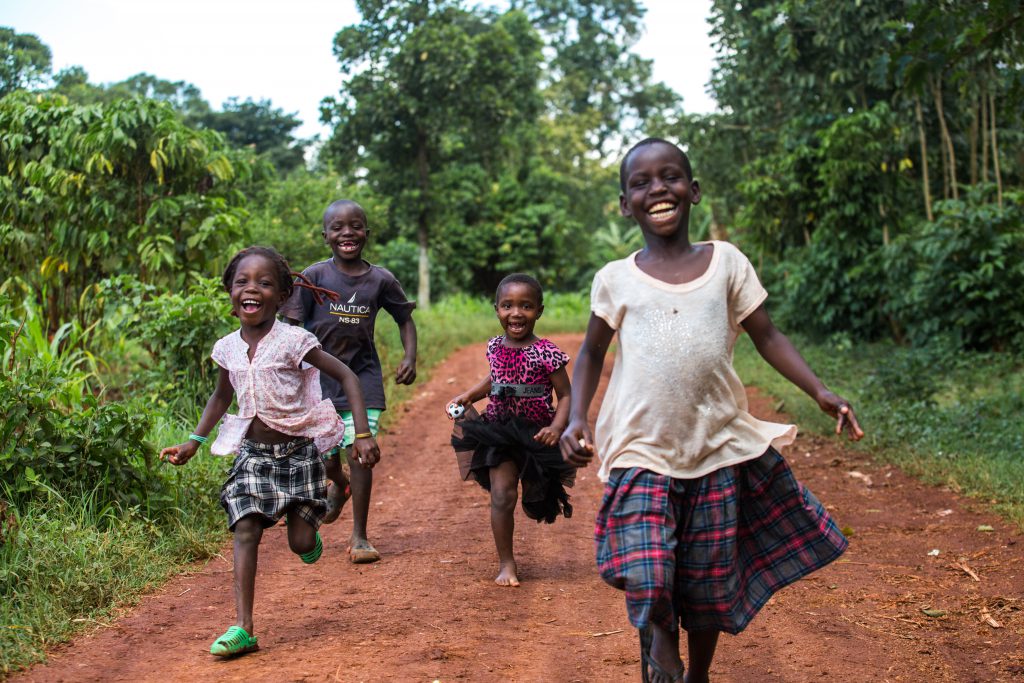
With a significant portion of its population in poverty, children are at risk and have few opportunities to get out of this impoverished state (Owori, 2020). With almost 80 percent of the population living in rural areas, rampant poverty and lack of access to resources have serious consequences which oblige many parents to restrict their children from attending school for them to work full time and contribute financially to the family, work in conflict zones, or marry at a very young age which are all very dangerous for the child.
Uganda ratified the CRC in 1990 with the additional two Optional Protocols, however, since then has not committed fully to these guidelines and protocols. Although there have been additional efforts to ease and better children’s lives such as programs and legislation to increase school enrollment, decrease maternal mortality and adopt the Children Amendment Act, many children still cannot get the full benefits of these: many cannot get adequate health care, education, or social care and are subject to increasing amounts of violence and harmful traditional practices (UNICEF, 2017).
Furthermore, there are gaps and insufficiencies in policy frameworks, implementation of programs, and mindset that must be improved to correctly address the needs of the children in Uganda and provide them an opportunity to benefit from all of their rights.
Child-sensitive social protection
Social protection is essential for preventing and reducing poverty for children and families, for addressing inequalities, and for realizing children’s rights. In addition, it is essential that social protection programs respond to children’s vulnerabilities by optimizing positive effects on children and minimizing potential adverse consequences. Given its positive contribution to reducing poverty, vulnerability, and risk social protection has gained interest in the last years.
Especially if child-sensitive social protection is put into action correctly, it has the opportunity to address chronic poverty, social exclusion, and external shocks which can irreversibly affect children. Social protection programs are established in Uganda but there are few that focus on children’s rights and the wide range of vulnerabilities children face. Ugandan children are especially vulnerable because they face a high risk of violence, abuse, lack of education, and challenges while reintegrating into societies post-conflict. Programs and a national child protection system to address these needs and protect vulnerable children must be implemented.
An allowance in HIV testing has become child-sensitive in the past decade. To improve children’s access to easier health services that they are generally excluded from because of their age, Uganda made it accessible for children over the age of 12 years to get tested for HIV. This helps especially high-risk mature minors, such as children who are married or have children of their own, minor sex workers, etc. to get tested for HIV easily and help the spread and awareness (Sloth-Nielsen, J. et al., 2009).
Another social protection program that spanned children with disabilities was the Social Assistance Grant for Empowerment (SAGE) which has approximately 10,000 beneficiaries. This program is a cash transfer scheme that is designed to help households with disabilities which specifically aids families with children with disabilities to survive financially and relieve stress over expenses (Merttens, 2015).
As mentioned, although some forms and policies of social protection in Uganda are partially child-sensitive, it is still inadequate for their needs. It is evident that when such programs are being implemented, children significantly benefit from them. Thus, it is important that policies, legislation, and regulations effectively consider the viewpoint of children and their caregivers so that children’s rights are adequately met.
Addressing the needs of children
Right to health
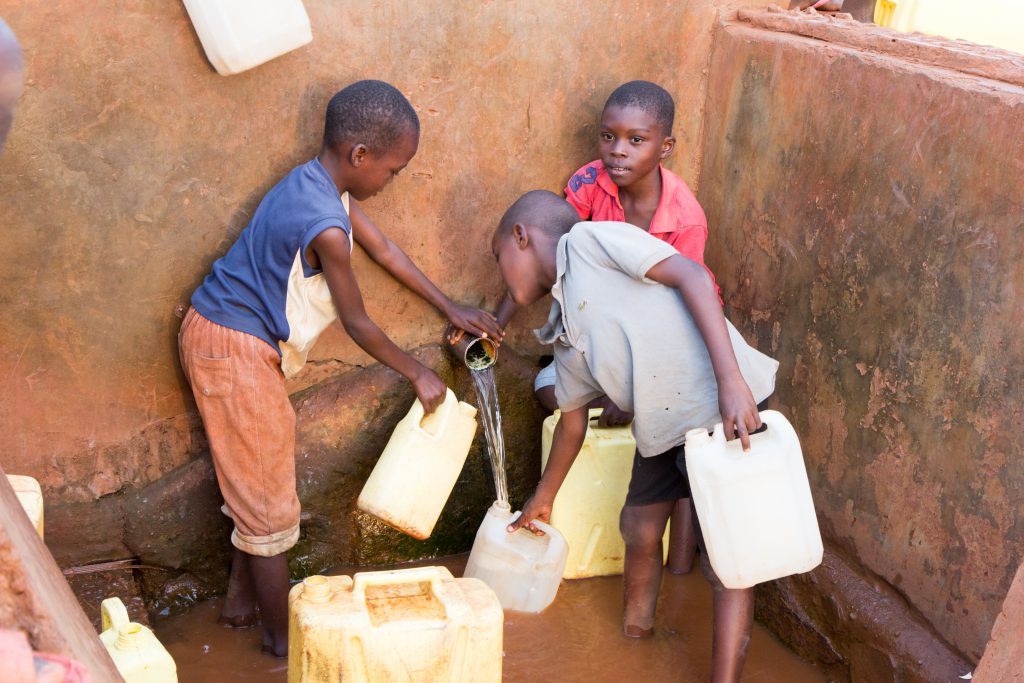
In Uganda, the mortality rate of children under the age of five is gravely high (41 per 1000 births) (World Bank, 2019), and life expectancy at birth is particularly low at 63.4 years (World Bank, 2019). Although over the years under-five mortality rates have steadily declined, it still remains significantly high. Chronic malnutrition, pneumonia, malaria, diarrhea, and HIV are big contributors to these and if not addressed will keep on affecting already vulnerable children. Child mortality is not evenly distributed: while rural areas like Karamoja, West Nile, and Southwest have significantly high mortality rates, urban areas have lower rates, yet still comparatively high (UNICEF, 2019).
Poverty, lack of infrastructure and ill-suited personnel are barriers to the health of children. Viral maladies are very virulent and are rapidly transmitted on account of lack of hygiene and unhealthy living conditions. Cholera, for example, is one of the problems that gravely affect the health of Ugandan youths. The use of dirty water in many households leads to many children becoming infected by this particular disease which can turn out to be fatal.
AIDS is equally prevalent throughout the country: 98,000 children from the ages of 0-14 are living with HIV (World Bank, 2020). There are high disparities between regions in terms of HIV rates, as well as disproportionately high rates regarding the female gender (UNICEF, n.d.). In recent years, significant progress has been made regarding AIDS prevention. Still, the virulence of this virus remains disconcerting. Not only children who have HIV are affected, but also the children whose parents pass away because of this are affected. Too many children still become orphans as a result of AIDS, and their future remains very dark.
Right to food
Many Ugandan children suffer from malnutrition. The country’s north-eastern region is very arid and the most affected. There, the land is too dry to produce an adequate amount of food; consequently, food shortages are a regular problem. In a Demographic and Health Survey done in 2016, it was found that 53% of children under the age of 5 suffered from anemia, 29% from stunting and 11% from underweight which are significantly high values. Although the government has implemented policies and programs including breeding of crops with specific nutritional values, providing supplements, and child-specific feeding programs, by looking at a general overview, these programs have not shown their full effect and benefitted children significantly (CDC, 2020).
Malnutrition, especially among children, has a serious impact on people’s health. Some die from it, while others exhibit deficiencies that can lead to any number of diseases. Lack of nourishment can have harmful effects that are sometimes felt for the entire duration of one’s life. Thus, it is essential to gain adequate nutrition to minimize the vulnerability of children.
Right to education
Uganda has been dealing with uncontrolled population growth for a long time and this puts extreme stress on the country’s educational system, making it harder to increase quality in education and lowering accessibility of education. Additionally, the learning facilities are in poor conditions with lacking washrooms and resources as well as poor and dangerous infrastructure.
Although the literacy rate in 2018 was 6.33% higher than 2012 at 76.53%, it is still not where it is supposed to be (Macrotrends, 2020). Nearly one out of every five children in Uganda is uneducated. The problem is particularly serious among young girls living in rural areas because of familial responsibilities and stigma (Hassan, 2020).
Although 7 years of education is compulsory for all children in Uganda, many school children cannot finish their schooling because they have to help pay family expenses or are recruited for conflict. While supplementary school costs also dissuade many parents from sending their children to school, to begin with, the total number of children receiving adequate education is still low.
Right to identity
The situation in Uganda was very alarming in 2011 when birth registration was only at 30 percent, but, the implementation of a new automated registration system launched with UNICEF has helped bring this up to 69 percent. However, there still remains a large percentage of undocumented births. This is primarily the result of the inaccessibility of registry services. Cost is also a factor, since the fees required for such a formality remain in practice quite high, despite Uganda’s efforts to improve the situation (UNICEF, n.d.).
In effect, children who lack the appropriate official papers are not recognized as members of society and cannot exercise their rights. Consequently, they do not exist in the eyes of society. In addition, children who are not registered, are most likely not protected from abuse, be it forced labor, drug trafficking, child marriage, prostitution, or other forms of sex trade, etc.
This in turn leads to greater difficulties for the individual in question: since they do not technically exist in the eyes of the law, they will not be able to enjoy their rights. Thus, it is imperative that the government of Uganda and the programs working on this issue continue to actively work to make funds available for campaigns aimed at raising awareness.
Right to freedom
In Uganda, speech can sometimes prove costly. Different opinions are not always welcome, and it can be risky to voice them too strongly. In these cases, the use of force is common; in general, demonstrations are violently suppressed. As a result, the personal security of individuals is considerably limited. A certain number of children, for example, are routinely wounded or even killed during these demonstrations (Burke, Okiror, 2021).
The situation for homosexuals, bisexuals and transsexuals is equally deplorable. They are violently persecuted and their freedom of expression is totally violated under the “Anti-Homosexuality Act” which calls for very harsh sentences. Homosexuality is considered a crime and can be punished with extremely heavy prison sentences. The rights of adolescent children are totally obsolete and they have no means of making themselves heard and respected (Fitzsimons, 2019). This can significantly affect their mental health as well as their physical health which is a significant threat.
Risk factors → Country-specific challenges
Child labor
In Uganda, work is an everyday reality for many children: they are compelled to find an activity that will improve their families’ financial resources, or, if they are orphans, that will enable them to survive. Certain children leave the land of their birth and become servants or work in agricultural sectors in neighboring countries. Child trafficking is equally prevalent throughout the territory.
Children are exploited in a variety of ways; some become the pawns of sex merchants, while others end up in the drug trade. Uganda is, unfortunately, one of the principal sources and destinations of child trafficking and children have the worst forms of child labor in commercial sexual exploitation. Children are also being worked at gold mines under dangerous conditions.
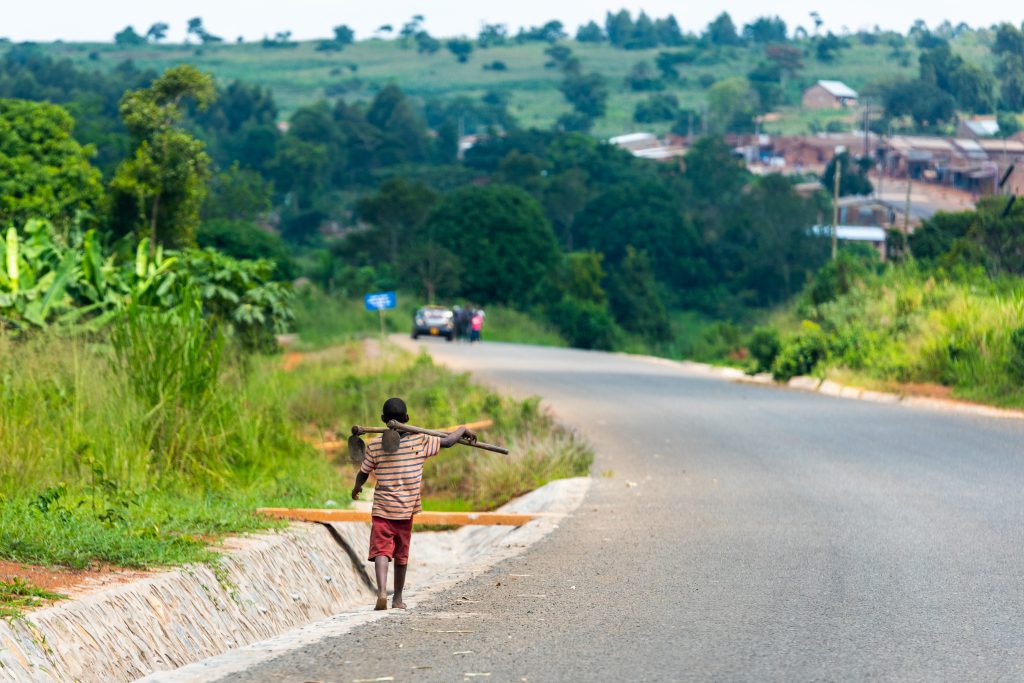
In 2020, to better these conditions, Uganda launched new policies such as an action plan to combat trafficking in persons and a child protection policy that aimed to eliminate child labor. Additionally, they implemented the Accelerating Action for the Elimination of Child Labor in Supply Chains in Africa program that targets child labor in agriculture, specifically coffee and tea production. Although these initiatives were a step in the right direction, they have had minimal effect on the issue mainly due to gaps in policy work, prosecution of public officials who facilitate child labor, lack of a centralized supervisory authority and resources, and failure to conduct proper investigations (U.S. Department of Labor, 2020).
Child abuse
In Uganda, violence committed against women and children is very prevalent. It frequently occurs within the heart of the family but extends to schools, neighbors, friends, and workplaces. However, those who commit such violence are very rarely brought to justice. Numerous pieces of legislation have been proposed to eradicate child abuse, but the situation remains far from satisfying.
In a survey conducted in 2018 with 18-24 year-old Ugandans, it was found that 35% of girls and 17% of boys reported experiencing sexual abuse during their childhoods which are highly concerning values. Considering that these are only the recorded values, it is highly plausible that actual rates are higher. Sexual violence results in mental distress, unwanted pregnancies, STIs, and many more to the children who are exposed to it which can cause serious long-term damage.
Additionally, of the people surveyed, 59% of females, and 68% of males reported experiencing physical violence in their childhoods. While parents and adult relatives were seen to be the most common perpetrators, male teachers were also reported with high cases of physical violence which plays a big role in school attendance and education (Ministry of Gender, Labor, and Social Development, 2018).
The protection of children must be incontestably reinforced. The physical and psychological consequences of child abuse of any kind are both serious and long-lasting. Thus it is imperative to hold those who commit such acts accountable and find more effective ways to combat this. It is also important to remove the stigma that may surround abuse and the reporting of cases.
Child soldiers
Children have played a major role in the conflicts that regularly erupt in Uganda. They were, in effect, recruited by armed groups who kidnapped them at an early age in violent ways; and they lived under the most atrocious conditions. Being subject to such violence at a young age causes these children to display physical, psychological, and social problems.
Young girls were raped and then kidnapped from their homes. Having fallen into the hands of these armed factions, they were forced to prostitute themselves and were constantly mistreated by their captors. This also added to the sexual exploitation problem of Uganda and caused major distress for the girls (Faulkner, 2016).
Numerous young boys became active members of armed groups. On orders from their commanders, they murdered and massacred entire families. The violent acts that they have witnessed, committed and been subjected to during childhood, will have a long-term effect on both their physical and mental health. The image of those acts will remain with them for the rest of their lives and their personalities will be changed forever.
Reintegrating such children into civil society is complicated. They have known only violence and cruelty over many years and find it difficult to return to a normal life. Certain centers have been established to aid them, but it is still hard to bring them back into the fold.
Although in 2018 it was found that these groups significantly decreased their activities and Uganda was moving to a more peaceful state, it is still important to recognize the children who have been through this and give them adequate care. And it is essential to implement protocols and surveillance to ensure that such acts do not surface (Preston, 2018).
Street children
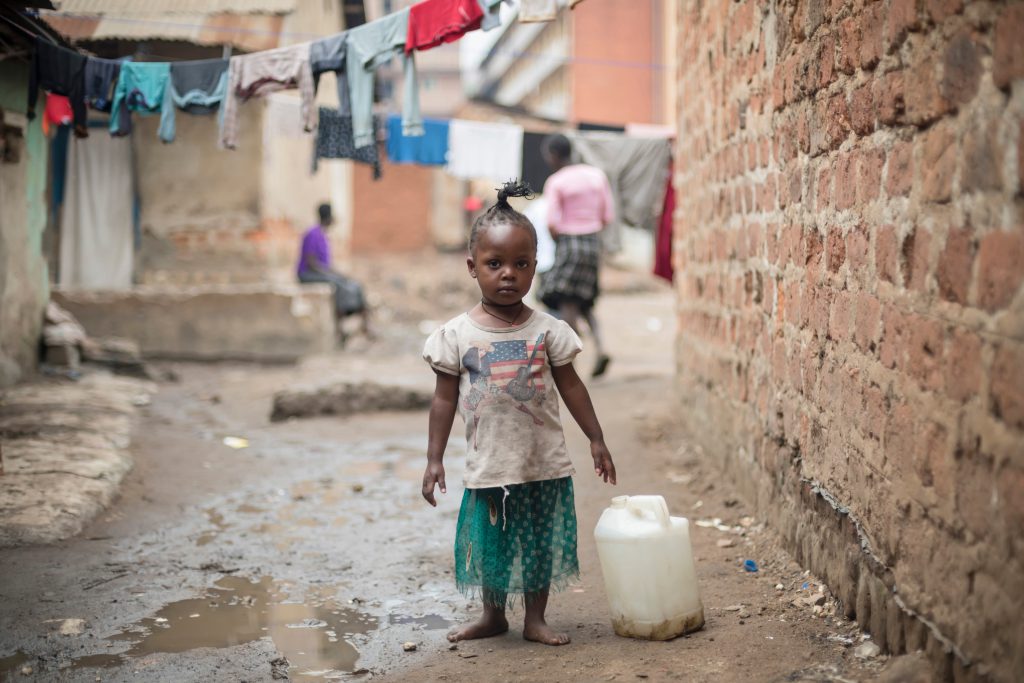
Many young Ugandan children are forced to live on the streets. They find themselves forced to migrate and live on the streets because of poverty, domestic violence, conflicts in their area or because their parents have passed away due to HIV/AIDS (CROSO, n.d.). Although the exact number is unknown, there is a significant amount of children living in the streets all around Uganda, at least 15,000 in the capital of Kampala only (BBC, 2019). The conditions they face are very bleak and they must constantly fight to survive.
Survival is very difficult. Begging is often their only option, even if this practice is very dangerous and frequently leads to them being violently beaten when they ask passersby for money. And new laws passed in 2019 ban people from giving money to beggars on the streets in Kampala which makes it even harder for them to survive (BBC, 2019).
Children who live on the streets are equally at the mercy of slave traffickers who, despite promising them a better life, quickly take advantage of them and exploit them. Such children rapidly become the victims of many vile practices and despicable acts.
Female genital mutilation
Although Uganda criminalized FGM in 2010 with “The Prohibition of Female Genital Mutilation Act 2010”, there are still regions where this practice is prevalent. When looking at Uganda overall, the prevalence of FGM is relatively low at 0.3 percent; however, depending on the region, this number might go as high as 95 percent especially in Pokot and Sabiny (Bhalla, 2019).
The practice is not well controlled in rural and remote areas and the addition of deep-rooted and dangerous cultural beliefs with minimal public awareness makes this issue worse. Implementation and enforcement of “The Prohibition of Female Genital Mutilation Act 2010” still remains a struggle.
The precariousness and lack of hygiene with which these excisions are practiced often lead to serious consequences for the health of young girls. Infections, haemorrhages, and other problems are often a direct result of this particular operation. In cases where females do not get FGM, it is also common that they are excluded from their surroundings, which only makes the taboo and stigma stronger (28TooMany, 2018).
Written by Yagmur Ozturk
Last updated on 17 November 2021
References:
Kurian, George Thomas 1992. Encyclopedia of the Third World, fourth edition, volume III, Facts on File: New York, N.Y., pp. 2009-2010.
“”Overall total population” – World Population Prospects: The 2019 Revision”. population.un.org. United Nations Department of Economic and Social Affairs, Population Division
[1] This article by no means purports to give a full or representative account of children’s rights in Uganda; indeed, one of the many challenges is the scant updated information on the children in Uganda, some of which are unreliable, not representative, outdated, or simply non-existent.

